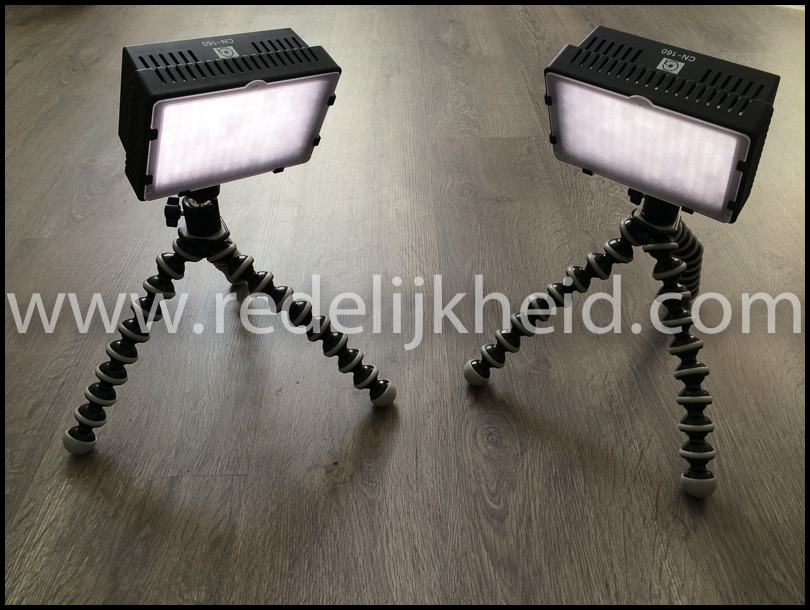When shooting macro, you need a lot of light. Normally you would use one or more (off-camera) flashes to facilitate this. The downside of a flash is that you only get the light when you press the shutter button. This can be challenging a relative low-light environment.
A solution for this is continuous lighting.
The traditional continuous lighting setups would get really hot. A couple of hundred Watts of power was nothing, and, in a small workspace, things could get hot (literally).
Thankfully, we have LED lights nowadays. Small (battery powered) devices with a lot of bright LED's, which are very affordable.
I bought a set of video lights on Amazon with 160 LED's (NanGuang CN-160) each. The devices are battery powered and give a lot of light. The video lights have a dimmer, so you can control the amount of light.
NanGuang CN-160 Video Lights
They take several types of batteries. Including 6 AA-type rechargeable batteries. The problem with the AA batteries is that they drain relatively fast, so I got a set of supported batteries, which normally go into a Sony camcorder (NP-F750F). Not the originals, but a cheaper knock-off. Another advantage of the larger batteries over the AA-types is that the amount of light produced is significant higher, and lasts for a longer period of time.
Batteries not included
The lights itself are relatively light, but with the batteries they tend to weigh around half a kilo each. So this is not a practical setup for handheld macro photography in the field.
To give you an idea of how much light they produce: The following photo was made in a dark room with one of the video lights on full power with the included diffuser. The camera (handheld) / lens settings were:
- Camera: Fujifilm X-T1
- Lens: Sigma 105mm F/2.8 Macro DG (F-mount with a X-adapter)
- Shutter: 1/600
- Aperture: F/8
- ISO: 400
All I need right now is to create some sort of a flexible (portable) workspace with a way of positioning the lights independently around the subject.
UPDATE: I received my cheap flexible tripods and (even cheaper) ballheads by mail today. This should make the lighting for my macro photography a bit easier.
The total cost of this setup is around €150 (depending on the currency exchange rate).
- 2 * CN-160 LED Lights: €52
- 2 * Falcon batteries (SONY compatible NP-F750-F incl. charger): €75
- 2 * 10-inch Flexible Desktop Digital Camera Tripod: €18
- 2 * POPLAR Octopus 1/4 Monopod / Tripod Ball Head: €9
Note: The setup is sufficient for the (cheap) LED-lights, but I wouldn't trust them with my Leica or Fuji camera.







